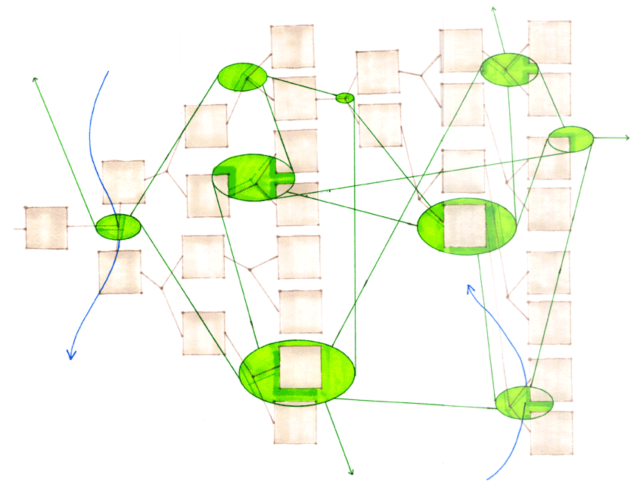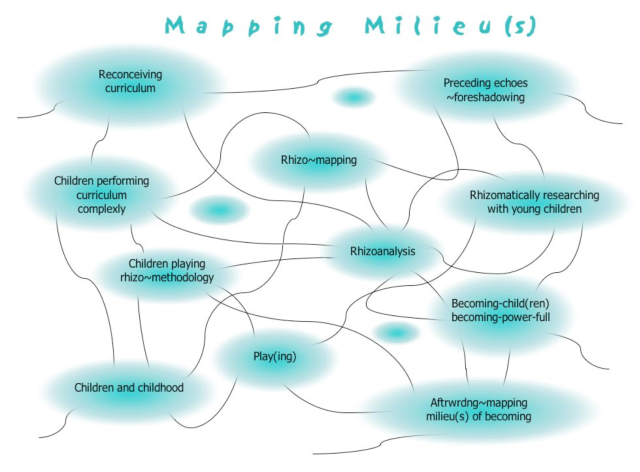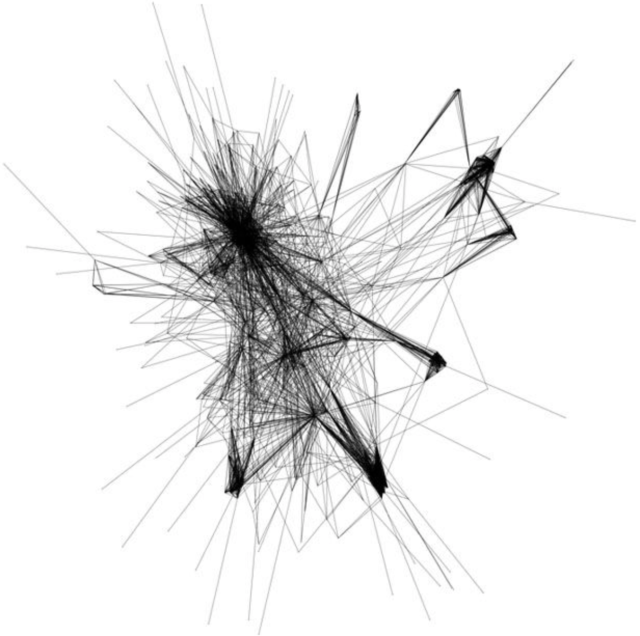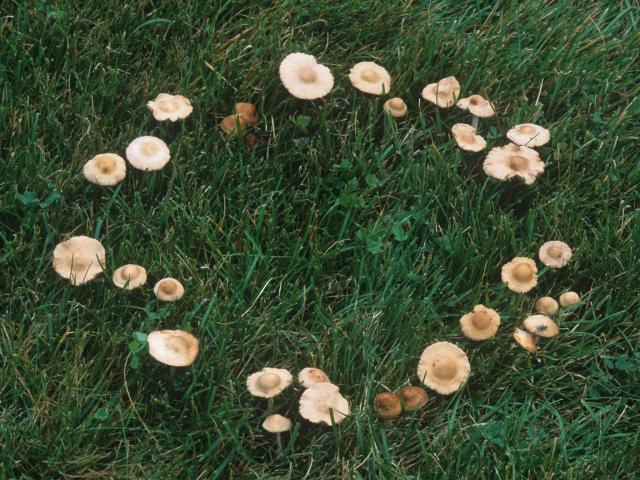When trying to visually represent Deleuze and Guattari’s plateaus it is necessary to choose a metaphor wisely. They say, “We call a ‘plateau’ any multiplicity connected to other multiplicities by superficial underground stems in such a way as to form or extend a rhizome (Deleuze and Guattari 1987:24).” This is itself metaphorically descriptive language. So, in the fashion of Lakoff and Johnson (why do these folk maraud in pairs?), in the quest for a visual metaphor, we pile them high.
The artist Marc Ngui (in Sellers 2009) contrasts plateaus (green ovals) with structured linear thinking (brown rectangles).

In her 2009 thesis, Marg Sellers depicts its component plateaus with blue, slightly amorphous shapes, connected by lines. This reminds me of looking down on a map of an archipelago with ferry routes between the islands.

Here are some real islands, connected by boats, causeways, bird flight, telephone cables, radio, and the ever-present sea.

This image shows bundles of connected lines. Paul Fry describes the structure of A Thousand Plateaus as “fascicular (2013: 38:30).”

And here are some mushrooms. Elsewhere (Hewitt 2013: 40-53) I have used a mycelial mycological metaphor to describe a Deleuzian rhizomatic space. The mushroom does have the advantage of literally being a rhizome. Perhaps the fruiting heads can stand for plateaus.

What terminology might replace “plateaus”? In the mycological case, the fruiting bodies are called “sporocarps”. The bundles could be “fascicules”. Islands are “insulae”. But island plateaus are, like Donne’s man, paradoxically not islands, in virtue of their interconnections. So, perhaps “insulae”. But then again, perhaps the Anglo-Saxon words suffice; or maybe just stick to “plateaus”.
References:
Deleuze, G. and F. Guattari, (1987). A thousand plateaus: Capitalism and schizophrenia. Minneapolis: University of Minnesota Press.
Fry, P., (2013). ENGL 300: Introduction to the Theory of Literature. Lecture 15. Open Yale Courses. Video http://oyc.yale.edu/english/engl-300/lecture-15 (accessed online 17 June 2013)
Hewitt, T., (2013). The Mycelium as a Metaphorical Meaning-Space for Music. Unpublished MA dissertation. The Open University. [ https://www.academia.edu/5194259/The_Mycelium_as_a_Metaphor_for_the_Metaphysical_Meaning-Space_of_Music ]
Lakoff, G. and M. Johnson, (2003). Metaphors we live by. Chicago IL; London: University of Chicago Press.
Sellers, M.A. (2009). Re(con)ceiving children in curriculum: Mapping (a) milieu(s) of becoming. Unpublished PhD thesis. University of Queensland. [A version here: https://issuu.com/gfbertini/docs/re_con_ceiving_children_in_curriculum_-_mapping__a ]
